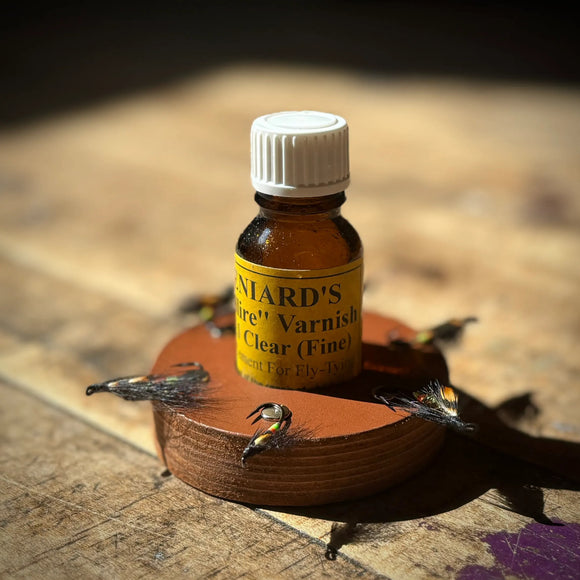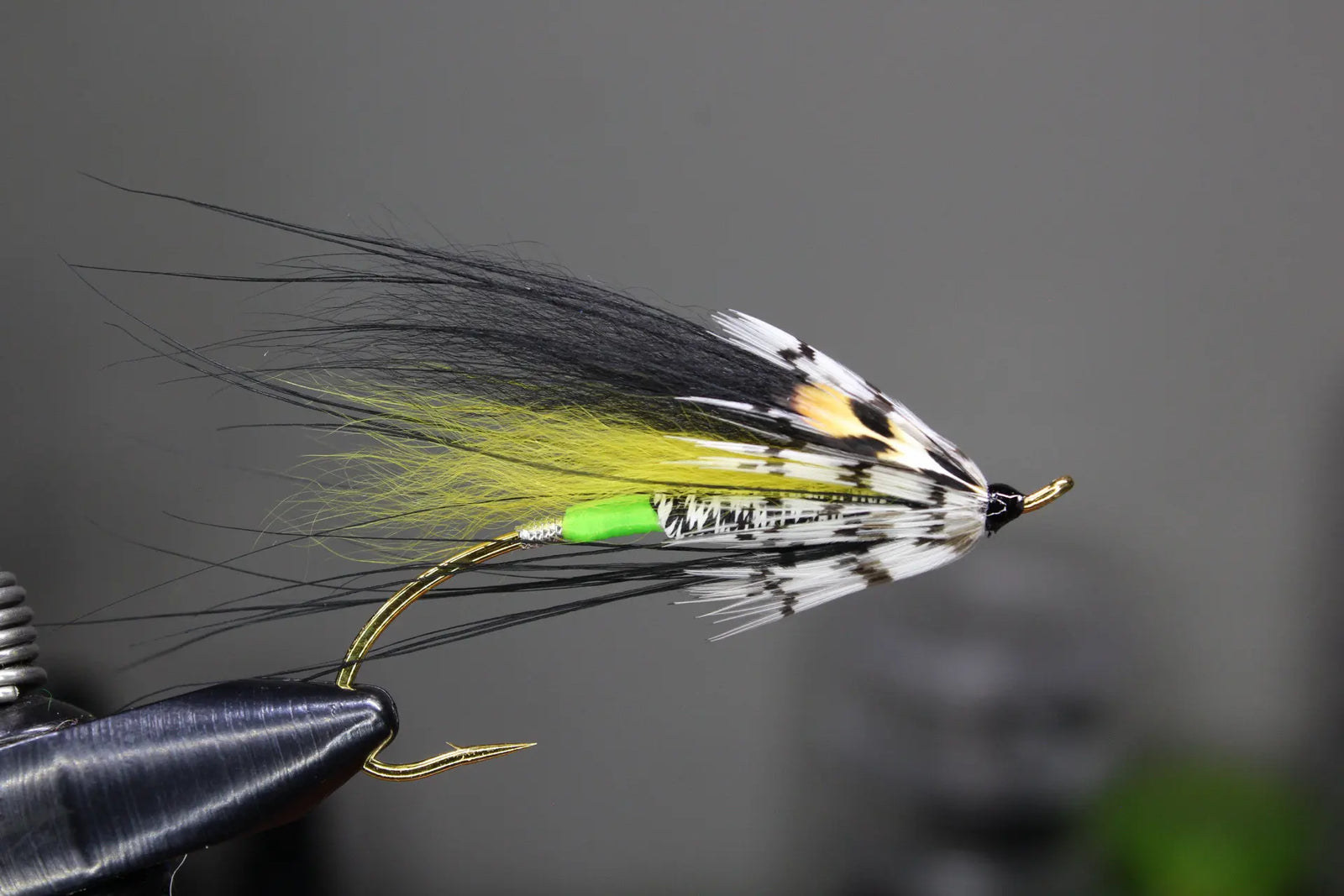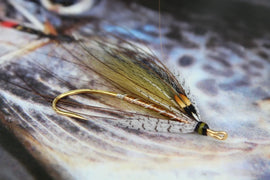By Kenzie Kozera
Originally created by George Maul, the Tiger Ghost has become a favorite of many anglers who pursue Atlantic salmon. Although fished by some anglers across the globe, the fly has grown increasingly popular in the Gaspé region. Providing great visibility and contrast, the Tiger Ghost is frequently a fly of choice during the early season where it is fished in large sizes (ie #3/0- #1.5) with hopes to attract the attention of enormous legendary fish.
Recipe:
Hook: Often tied on Daiichi Alec Jackson Spey Hooks. Any traditional salmon hook (single or double) is suitable.
Tag: Silver oval tinsel
Butt: Green floss.
Body: Tiger Ghost Braid. The original versions were using Gudebrod butt wrap, a material used in rod building (I believe..), however, this appears to be not longer produced and is growing more difficult to obtain.
Under Wing: Yellow fur- choice of buck tail, artic fox, finn racoon, temple, etc
Top Wing: Black fur- similar as above, some tyers prefer different wing materials.
Spey Hackle: Black heron or substitute
Collar: Silver pheasant body feather. *It is worth noting that this is the “modern” interpretation of the patter, as the original was not tied with a collar, but instead with “cheeks” of silver pheasant.
Head: Black thread
Step by step instructions:
 Step 1: Choose and secure your hook. Most common choice of hook for many of the flies from the Gaspe region are tied on Daiichi Alec Jackson Spey Hooks (ie 2050, 2051, 2052, 2055). In this instance, I am using a #1.5 Daiichi 2055.
Step 1: Choose and secure your hook. Most common choice of hook for many of the flies from the Gaspe region are tied on Daiichi Alec Jackson Spey Hooks (ie 2050, 2051, 2052, 2055). In this instance, I am using a #1.5 Daiichi 2055.




*While the original Gudebrod braid is relatively easy to work with, some other comparable braids are a little stiffer due to being waxed. If you find your braid is stiff, you can soak it in hot water, expose it to steam, or hit with a warm hair dryer to help make it more pliable.




Step 9: Add your collar of silver pheasant body hackle.
 Step 10: Add your jungle cock eyes (or artificial, if jungle cock is not legal in your area).
Step 10: Add your jungle cock eyes (or artificial, if jungle cock is not legal in your area).

Step 11: Build and whip finish your head. Add your choice of head cement or varnish.

FLIES
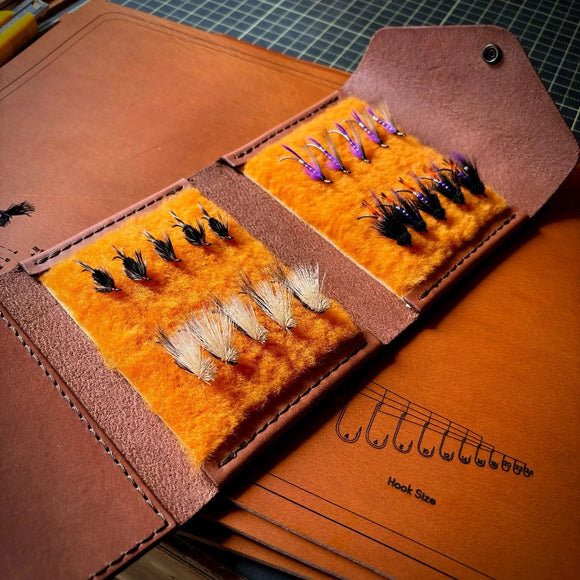

Steelhead Fly Pack
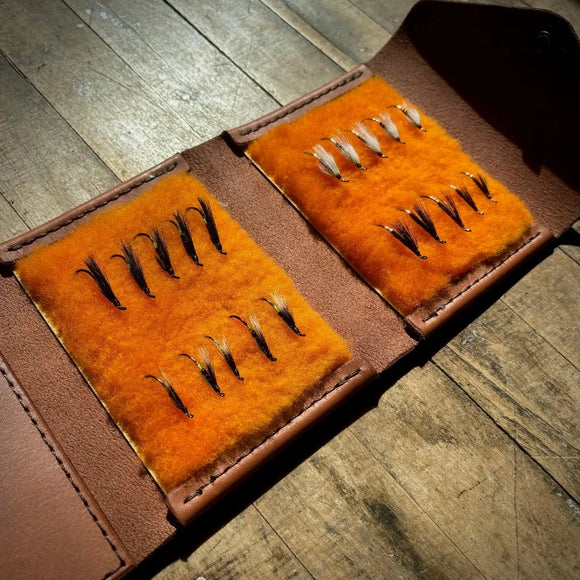

Salmon Fly Pack - #1
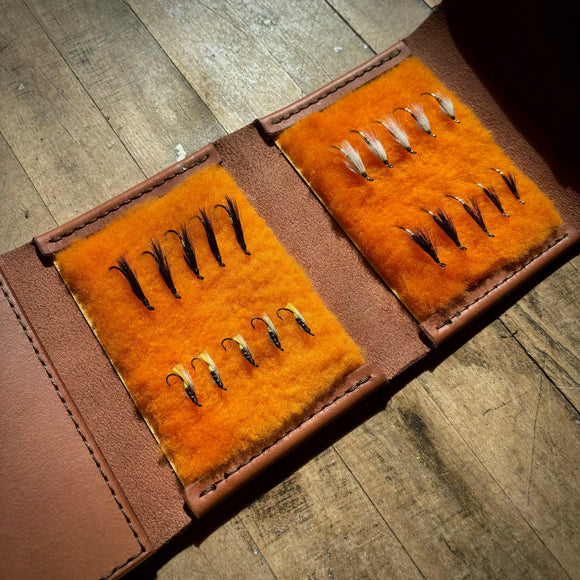

Salmon Fly Pack - #2
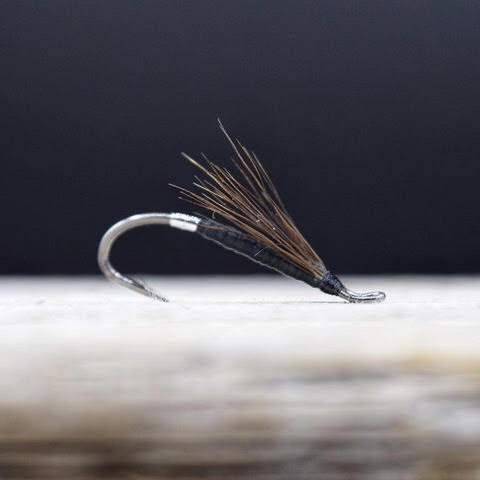
Black Silver Tip
FLY TYING
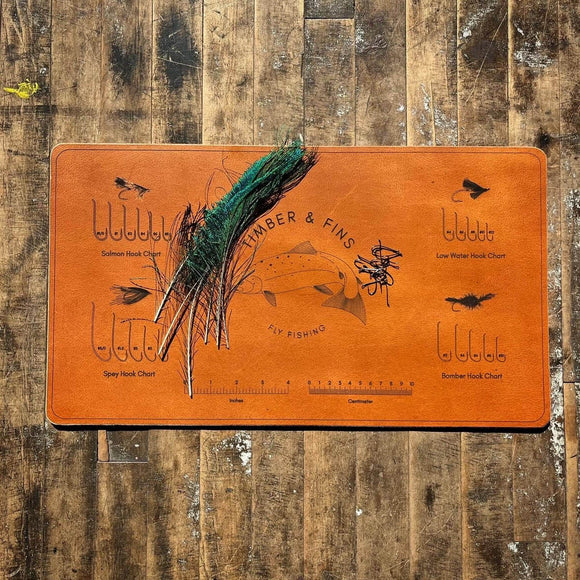
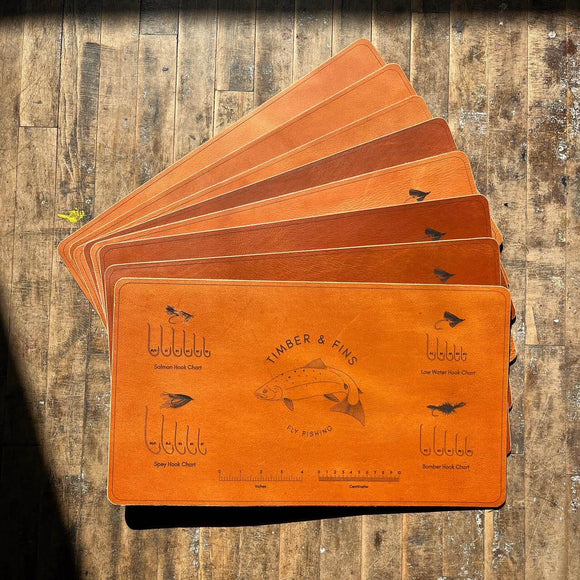
Salmon Fly Tying Leather Mat
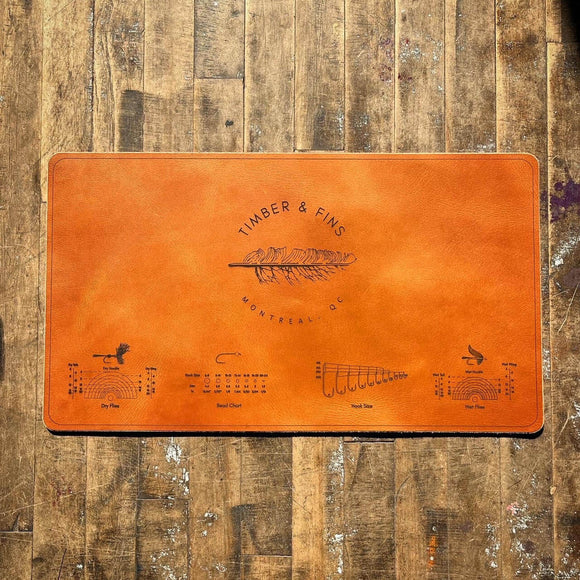

Fly Tying Leather Mat
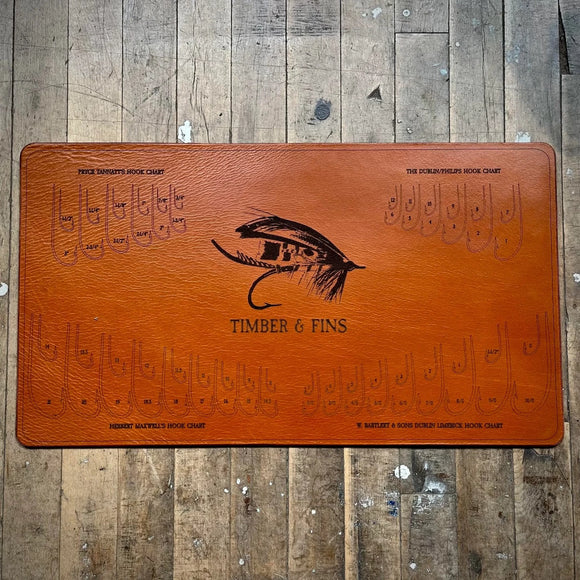
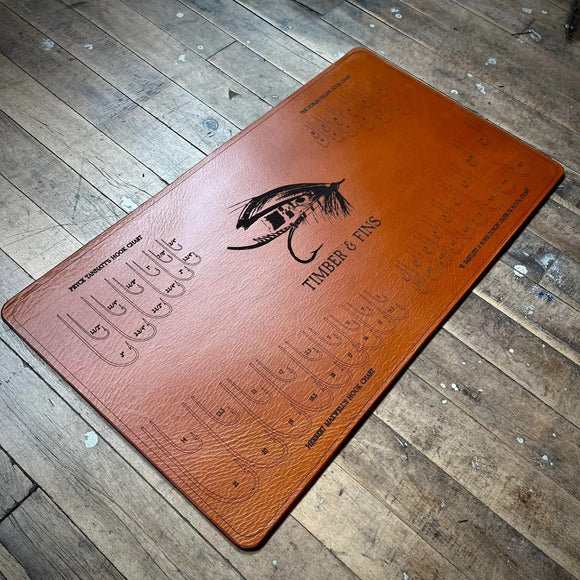
Heritage Fly Tying Leather Mat
